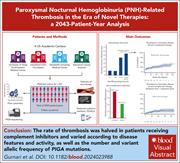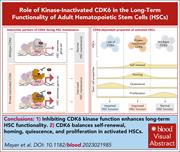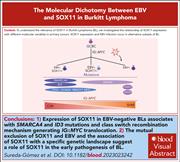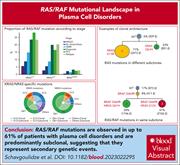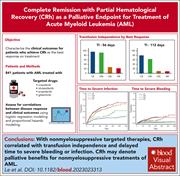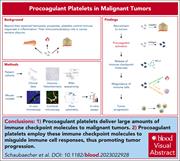Issue Archive
Table of Contents
BLOOD COMMENTARIES
PERSPECTIVE
Antibody-drug conjugate adverse effects can be understood and addressed based on immune complex clearance mechanisms
Antibody-drug conjugates (ADCs), such as gemtuzumab ozogamicin and inotuzumab ozogamicin, are increasingly used in the treatment of several hematological malignancies and display a distinct set of toxicities. In this Perspective, Taylor and Lindorfer propose the hypothesis that many of the serious adverse events seen with ADCs relate to their interaction with processes involved in immune complex clearance. The authors review the key toxicities, describe the potential underlying mechanisms, and propose a series of strategies to overcome these issues.
CLINICAL TRIALS AND OBSERVATIONS
Paroxysmal nocturnal hemoglobinuria–related thrombosis in the era of novel therapies: a 2043-patient-year analysis
Clinical Trials & Observations
Historically, thrombosis was the major cause of mortality in patients with paroxysmal nocturnal hemoglobinuria (PNH), but with the advent of anticomplement therapy, this is less of an issue in 2024. Gurnari et al analyzed longitudinal thrombosis data on 267 patients with newly diagnosed PNH for a median of 5.9 years, finding that atypical venous thrombosis remains a major presenting complaint and that thrombotic risk correlates with PNH clone size and degree of hemolysis. Direct oral anticoagulants appear effective and can be ceased without recurrence if intravascular hemolysis is fully suppressed.
HEMATOPOIESIS AND STEM CELLS
Kinase-inactivated CDK6 preserves the long-term functionality of adult hematopoietic stem cells
Coordination of cell-cycle progression and gene expression is required in hematopoietic stem cells (HSCs) to regulate self-renewal, differentiation, and quiescence; the cell-cycle regulator cyclin-dependent kinase 6 (CDK6) is known to play a role. By studying murine CDK6 wildtype, knock-out, and kinase-inactivated cells, Mayer et al discovered that HSCs with the kinase-inactivated CDK6 retain stem cell properties, while loss of CDK6 impairs HSC self-renewal. The authors’ findings indicate that besides its canonical role in cell-cycle regulation, CDK6 also regulates gene expression programs required for HSC maintenance and activation.
IMMUNOBIOLOGY AND IMMUNOTHERAPY
IL-18-secreting multiantigen targeting CAR T cells eliminate antigen-low myeloma in an immunocompetent mouse model
In multiple myeloma, the currently available chimeric antigen receptor (CAR) T cells do not appear to be curative, and new constructs and approaches are needed. Using immunocompetent mouse models, Ng and colleagues demonstrate that interleukin-18 (IL-18)–secreting CAR T cells promote clearance of antigen-low myeloma with reprogramming of cells in the myeloma microenvironment and that antimyeloma activity can be further enhanced by targeting multiple-surface antigens by increasing T-cell–target avidity and IL-18 output. These data suggest a potential clinically applicable method for future treatment of myeloma.
LYMPHOID NEOPLASIA
SOX11 expression is restricted to EBV-negative Burkitt lymphoma and is associated with molecular genetic features
Epstein-Barr virus (EBV) positivity is a hallmark of Burkitt lymphoma (BL) but is not always present. Sureda-Gómez and colleagues stringently studied the molecular features of a large series of BL, demonstrating the mutual exclusivity of SRY-related HMG-box gene 11 (SOX11) expression and EBV presence and that EBV-negative SOX11-positive BL and SOX11-negative BL display distinct mechanisms for generation of the pathogenic IG∷MYC translocations as well as different somatic mutation profiles. The authors’ work indicates distinct routes to pathogenesis and provides pivotal insights into the molecular subtyping of BL.
RAS/RAF landscape in monoclonal plasma cell conditions
Brief Report
MYELOID NEOPLASIA
Complete remission with partial hematological recovery as a palliative endpoint for treatment of acute myeloid leukemia
Clinical Trials & Observations
Controversy exists as to whether some intermediate treatment response end points in acute myeloid leukemia (AML) represent meaningful clinical benefit. Le and colleagues from the US Food and Drug Administration analyzed the patient benefit associated with achievement of complete remission with partial hematological recovery (CRh) for patients with predominantly relapsed AML treated with molecularly targeted, nonmyelosuppressive drugs. Despite neutrophil and platelet counts being as low as half of what is conventionally required for a full CR, those achieving CRh experienced greater likelihood of transfusion independence and longer time to severe infection or severe bleeding than nonresponders, indicating meaningful palliative benefit.
PLATELETS AND THROMBOPOIESIS
Procoagulant platelets promote immune evasion in triple-negative breast cancer
It is now recognized that different platelet subsets play different roles in health and disease. Utilizing mouse models of breast cancer, Schaubaecher et al unveil an elaborate system of communication between tumor cells, immune cells, and platelets, identifying a subpopulation of platelets supporting tumor progression by delivering immune checkpoint molecules and redirecting immune responses in “triple negative” breast cancer. These elegant studies shed new light on the role of platelets in malignancy and establish that not all platelet populations contribute equally to the tumor immune environment.
THROMBOSIS AND HEMOSTASIS
Fitusiran reduces bleeding in factor X–deficient mice
Factor X (FX) deficiency is a rare bleeding disorder, carrying major risks of intracranial bleeding in severe cases. Verhenne and colleagues describe the first viable murine model of severe FX deficiency and utilized this model to evaluate fitusiran, a small interfering RNA which reduces antithrombin production, as a therapeutic option. Fitusiran effectively restored hemostatic competence in FX-deficient mice, suggesting it has potential to become an alternative treatment to current plasma product–based therapy.
BLOOD WORK
ERRATA
-
Cover Image
Cover Image
![issue cover]()
Confocal microscopy image of the synapse between a B-cell activating factor receptor (BAFF-R)/APRIL dual-chimeric antigen receptor (CAR) T cell and an MOPC315.BM myeloma cell. Coexpression of both enhanced green fluorescent protein BAFF-R CARs (green) and APRIL-tagRFP CARs (red) at the synapse enhances T-cell activation and myeloma lysis. See the article by Ng et al on page 171.
- PDF Icon Front MatterFront Matter
- PDF Icon Table of ContentsTable of Contents
- PDF Icon Editorial BoardEditorial Board
Advertisement intended for health care professionals
Email alerts
Advertisement intended for health care professionals


